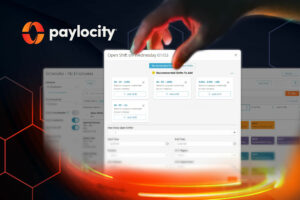By: Jill Krumholz
There was a time when compensation and benefits were relatively simple and straightforward. Companies provided wages in exchange for employee time and effort, and some sweetened the deal with insurance benefits such as health, life, and long-term disability. Over time, the competition to attract and retain a dedicated, productive workforce has driven employers to rethink the perquisites (perks) they offer.
This reevaluation led many to adopt a Total Rewards strategy, and the changes in workforce management in recent years has made the concept of Total Rewards even more relevant.
A company’s culture – who it is and its values – plays a significant role in identifying the Total Rewards components that speak to an organization’s workforce and drive success, for both the business and individuals. Creativity is the key to a cutting edge Total Rewards program.
In this article, we will introduce the idea of Total Rewards and discuss how such a focus can shape and reinforce your culture.
- Total Rewards is a Holistic Approach to Employee Recognition
- Distinguishing Direct and Indirect Compensation
- The Flexibility of Indirect Benefits
- Building a Total Rewards Program Aligned with Your Company Goals, Culture, and Workforce
- Balancing Corporate Interests and Employee Expectations
- Synergies with Other Human Resources Initiatives
Total Rewards is a Holistic Approach to Employee Recognition
Total Rewards takes a broader and more comprehensive view of compensation, extending beyond wages and health insurance, to address all facets of an employee’s life – work-related as well as personal.
The approach recognizes that employees value more than a paycheck. They appreciate and in many instances expect companies to reward their service in ways that support all aspects of their lives with both direct and indirect compensation. Additionally, more workers are pressing employers to stand up as good corporate citizens and address current challenges facing society. One way many organizations address these concerns is with original Total Rewards designs.
Distinguishing Direct and Indirect Compensation
Total Rewards programs encompass both direct and indirect forms of compensation. Direct compensation refers to the cash paid to employees for the work they perform. Direct compensation seems straight forward, but there is more to this category than just base pay. Bonuses, commissions, stock options, profit sharing, and other monetary earnings fall into this category.
Indirect compensation is everything else.This broad concept is limited only by legal parameters, corporate budget, and the levers that drive an organization’s overall compensation strategy. Some standard perks that fall under this umbrella include health insurance, paid time off, and retirement plans (pension and 401(k)), but any non-monetary “extra” conferred is an indirect benefit.
The Flexibility of Indirect Benefits
In recent years, we have seen an explosion in the innovative ways companies attract, retain, and recognize their employees. In the most effective programs, Total Rewards offerings mirror the company’s values, mission, and overall culture.
A company’s catalog of indirect benefits speaks volumes about who they are, where they are going, and how they want to get there. They inform applicants prior to the interview stage, thus attracting candidates who value the culture and direction of the organization. Once on board, indirect benefits greatly impact employee commitment and morale.
Examples of indirect benefits that extend beyond paid time off and insurance coverages include:
- Flexible work schedules
- Hybrid
- Remote
- Compressed workweeks (i.e., 4-day workweek)
- Employee assistance programs supporting mental health needs
- Wellness benefits, such as gym memberships
- Tuition reimbursement
- Child and elder care
- Sabbaticals to pursue work and non-work related interests
- Student loan repayment
This list could go on and on. Each organization needs to reflect on their unique situation and devise a comprehensive Total Rewards strategy that dovetails with their business goals and the characteristics of their employee population.
Building a Total Rewards Program Aligned with Your Company Goals, Culture, and Workforce
Whether updating your current program or migrating to a Total Rewards model, how you decide to appreciate and recognize your employees should tie back to your organization’s mission and values – what the company aims to accomplish in the world at large and how it appreciates and recognizes the people who help get it there.
By reflecting on these big picture themes, companies can then distill those drivers into actionable items. By identifying meaningful formal and informal offerings, employers can craft tangible Total Rewards strategies that support those goals and evidence their corporate cultures.
Balancing Corporate Interests and Employee Expectations
The better an organization understands who it is (or wants to be) and the traits that make its workforce unique, the more effectively it can integrate that knowledge into a dynamic Total Rewards design. To be successful, Total Rewards components must always align with corporate objectives and budgets, but they must also match the specific makeup of a company’s workforce.
What motivates manufacturing facility employees may not be successful in an office setting. Similarly, younger workforces may be focused on career pathing, education and development opportunities, wealth accumulation, and childcare alternatives, while seasoned workforces may be looking for assistance with elder care, college preparation for their high school aged children, and retirement planning and transitioning.
Synergies with Other Human Resources Initiatives
Total Rewards factors into a number of Human Resources policies, with indirect benefits being the backbone of many initiatives. Recruitment, performance management, recognition programs, and diversity, equity and inclusion are only a few of the HR programs that a strong Total Rewards approach enhances.
Here are some examples where Total Rewards adds value:
- In addition to a competitive salary and bonus, unique and broader thinking indirect benefits may help with talent recruitment by differentiating your company from the competition
- Targeted, indirect benefits, such as company cars for field sales representatives, may improve engagement and productivity as part of innovative recognition programs
- Performance management programs utilizing unique and specific incentives may increase employee productivity and engagement by focusing on what motivates particular groups or individual employees
- Ensuring equitable distribution and access to benefits reinforces a company’s commitment to value all employees equally and create a welcoming, comfortable, and innovative work environment
- Flexible work arrangements, such as remote options or work sharing, may result in higher retention and engagement rates
While wages are always the starting point for compensation discussions, today, applicants and employees require broad rewards packages that recognize their financial needs, personal interests, and address important societal issues. This expectation places a value on indirect compensation as never before seen, and it is through an inventive application of indirect compensation that a company’s culture and values can shine through – not only to employees but the greater marketplace.
If you need assistance reviewing your existing compensation strategy and designing an effective Total Rewards program, we encourage you to contact us at RealHR. We welcome the opportunity to discuss your needs and help you reach your desired goals.





No comment yet, add your voice below!